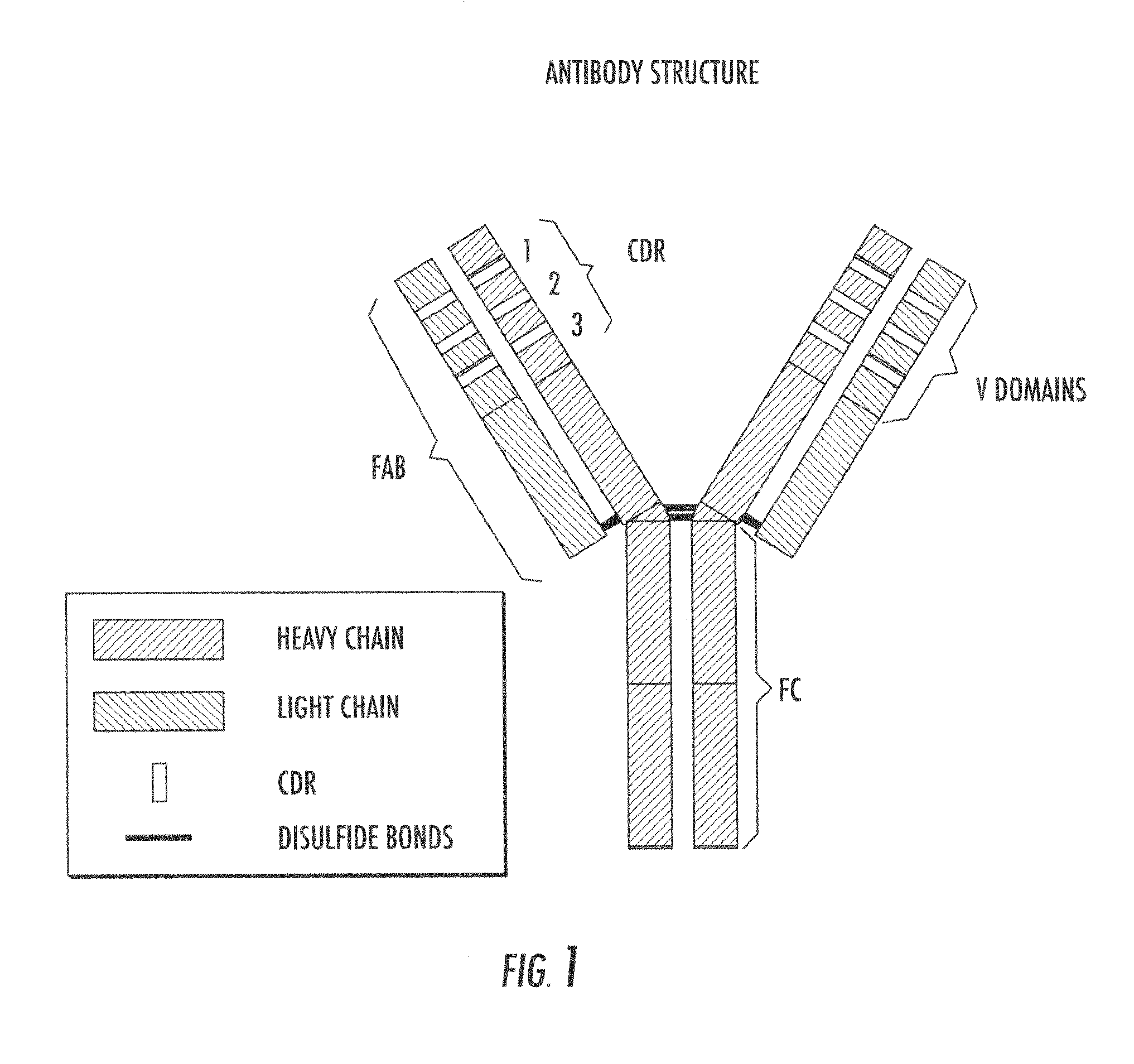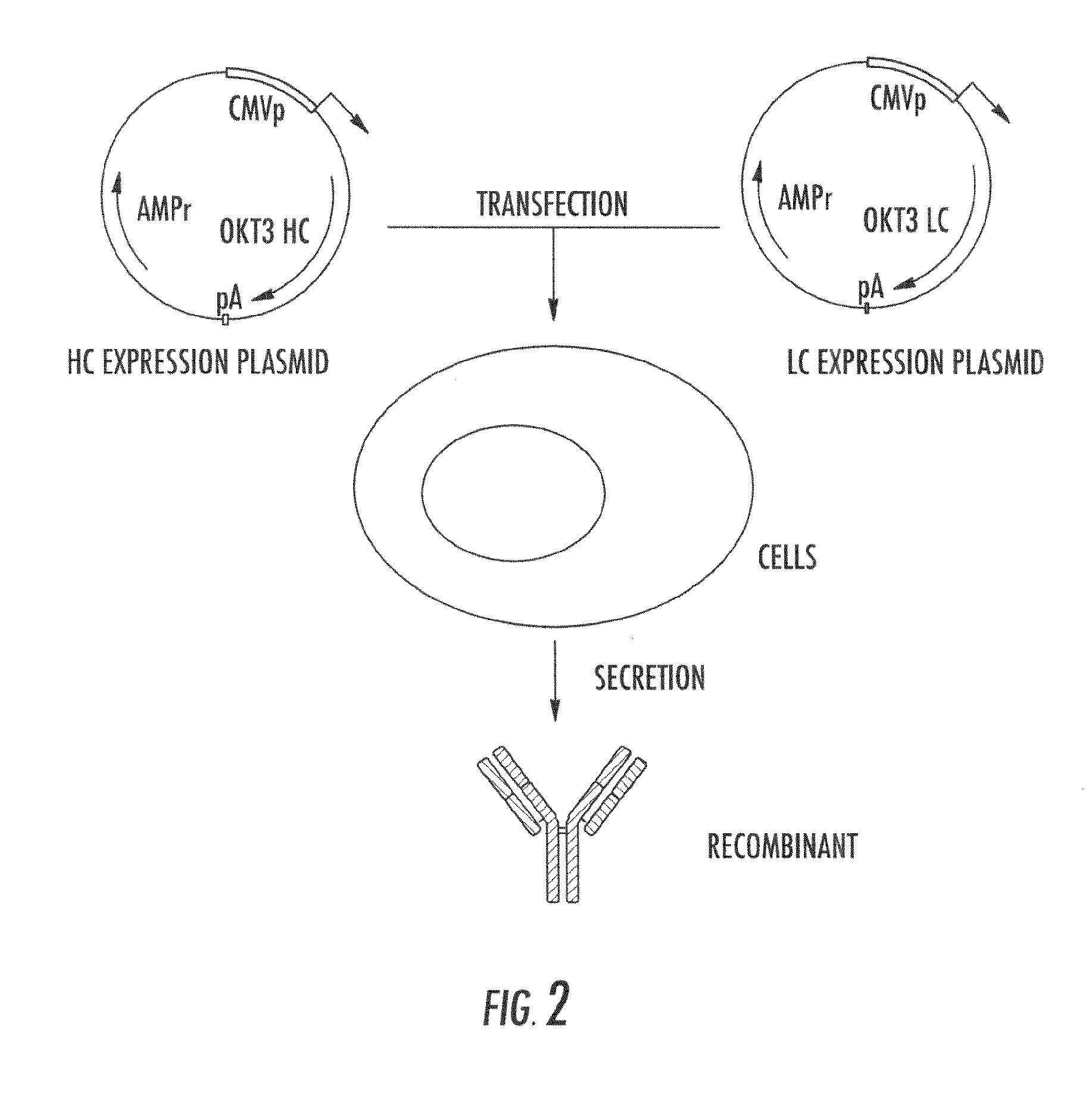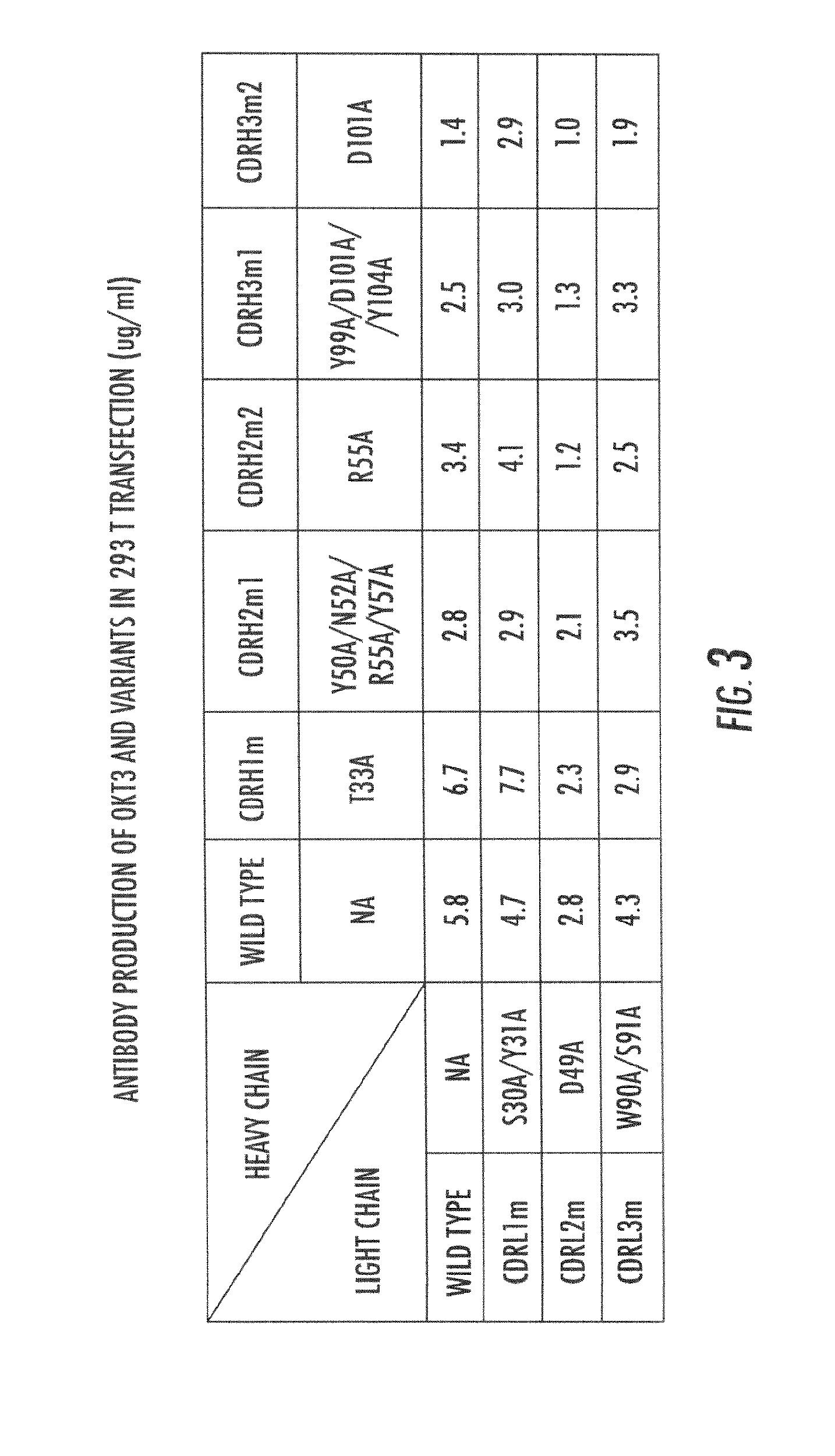Lowered affinity antibodies and uses therefor
a technology of affinity antibodies and antibodies, which is applied in the field of lowered affinity antibodies, can solve the problems of cross-reactivity or non-specific binding, difficult, if not impossible, to establish a causal relationship between the specific binding activity of antibodies and the biochemical and biological effects of antibodies,
- Summary
- Abstract
- Description
- Claims
- Application Information
AI Technical Summary
Benefits of technology
Problems solved by technology
Method used
Image
Examples
example 1
Generation and Characterization of Novel Lowered Affinity Antibodies
[0085]OKT3 is a murine IgG2a antibody recognizing human CD3-ε chain, a non-variable component of T cell receptor. Binding of OKT3 antibody leading to activation of T cells initially but subsequently inducing apoptosis of the T cells. OKT3 has been used as an immunosuppressant for preventing rejection of transplanted organs (Midtvedt K, Fauchald P, Lien B, et al. (2003). “Individualized T cell monitored administration of ATG versus OKT3 in steroid-resistant kidney graft rejection”. Clinical transplantation 17: 69-74). The crystal structure of OKT3 complexed with the human T cell receptor CD3-εγ heterodimer has been determined (Kjer-Nielsen L, Dunstone M A, et al. (2004) “Crystal structure of the human T cell receptor CD3 epsilon gamma heterodimer complexed to the therapeutic mAb OKT3”. Proc Natl Acad Sci USA. 101:7675-7680), and provided a proof-of-concept example for engineering of the lowered affinity antibody.
[008...
PUM
| Property | Measurement | Unit |
|---|---|---|
| volume | aaaaa | aaaaa |
| volume | aaaaa | aaaaa |
| pH | aaaaa | aaaaa |
Abstract
Description
Claims
Application Information
 Login to View More
Login to View More - R&D
- Intellectual Property
- Life Sciences
- Materials
- Tech Scout
- Unparalleled Data Quality
- Higher Quality Content
- 60% Fewer Hallucinations
Browse by: Latest US Patents, China's latest patents, Technical Efficacy Thesaurus, Application Domain, Technology Topic, Popular Technical Reports.
© 2025 PatSnap. All rights reserved.Legal|Privacy policy|Modern Slavery Act Transparency Statement|Sitemap|About US| Contact US: help@patsnap.com



